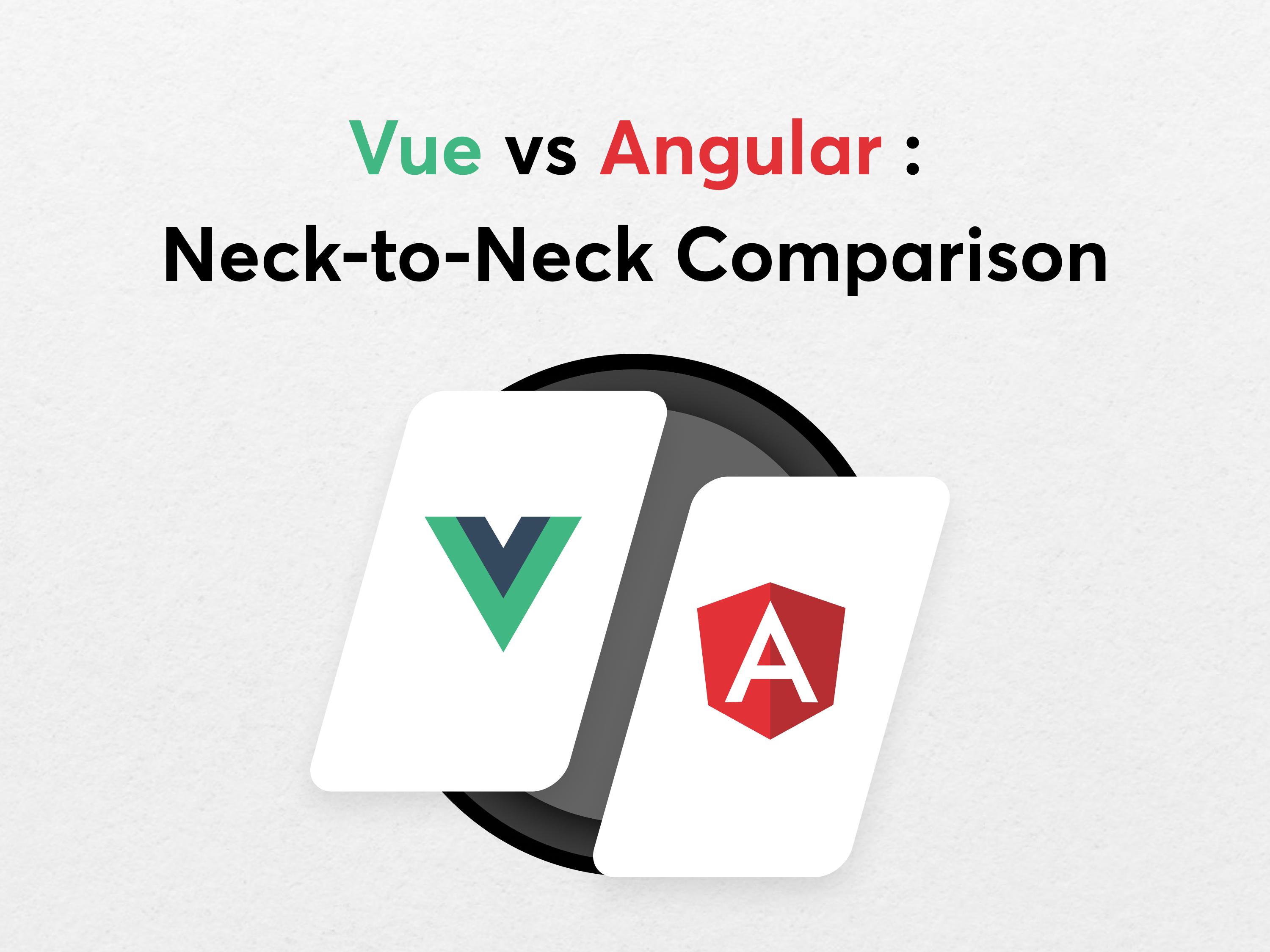Introduction
In the world of front-end development, choosing the right JavaScript framework can be a daunting task. Two popular contenders in this arena are Vue.js and Angular. Both have gained significant traction and have their loyal following of developers. In this blog post, we will conduct a neck-to-neck comparison of Vue.js and Angular to help you make an informed decision for your next project.
Introduction to Vue.js and Angular
Vue.js
Vue.js, often simply referred to as Vue, is an open-source JavaScript framework for building user interfaces. It was created by Evan You and first released in 2014. Vue has quickly gained popularity for its simplicity and flexibility. It allows developers to incrementally adopt the framework and integrate it into existing projects.
Angular
Angular, on the other hand, is a comprehensive and opinionated front-end framework developed and maintained by Google. It was originally released as AngularJS in 2010 but underwent a major rewrite to become Angular 2+ in 2016. Angular is known for its robustness and extensive set of features. It's often used for building large-scale applications.
Language and Learning Curve
Vue.js
Vue.js uses HTML-based templates for defining the user interface. If you're familiar with HTML, JavaScript, and CSS, picking up Vue should be relatively straightforward. The learning curve is gentle, making it an excellent choice for beginners or for those transitioning from other front-end frameworks.
Angular
Angular, in contrast, uses TypeScript by default. While TypeScript offers advantages like static typing and better tooling, it can be a bit of a learning curve if you're not already familiar with it. Angular's complex architecture and extensive documentation may also require more time to grasp fully. It's a better fit for teams working on large-scale applications with the resources to invest in a steeper learning curve.
Architecture and Organization
Vue.js
Vue.js is designed to be incrementally adoptable, meaning you can use as much or as little of it as you like in your project. Its architecture centers around components, which are self-contained, reusable building blocks. Vue's Single File Components (SFCs) allow you to define templates, JavaScript, and CSS in a single file, promoting better organization.
Angular
Angular follows a more opinionated and comprehensive architecture. It enforces a set of best practices and provides a powerful CLI (Command Line Interface) for generating components, services, and modules. Angular's architecture is based on modules, components, services, and dependency injection, which can be beneficial for large, complex applications but may feel overwhelming for smaller projects.
Community and Ecosystem
Vue.js
Vue.js has a rapidly growing and passionate community. It benefits from a rich ecosystem of third-party libraries and plugins available via npm. While it may not be as extensive as Angular's ecosystem, Vue's ecosystem is robust enough to support most development needs.
Angular
Angular has a mature and well-established ecosystem with a wealth of libraries, tools, and official packages. It's backed by Google, which means strong corporate support and regular updates. However, the size and complexity of Angular's ecosystem can be both an advantage and a drawback, depending on your project's requirements.
Performance
Vue.js
Vue.js is known for its excellent performance. Its virtual DOM and reactivity system ensure efficient updates to the UI. Vue's small bundle size also contributes to faster load times. For most applications, Vue's performance is more than sufficient.
Angular
Angular's performance is also commendable, but its larger bundle size can result in slightly longer initial load times. However, Angular's Ahead-of-Time (AOT) compilation can help mitigate this issue. For high-performance requirements, Angular provides the necessary tools and optimizations.
Community and Industry Adoption
Vue.js
Vue.js has seen significant growth in recent years and is widely adopted by companies of all sizes. It's especially popular in Asia and has a strong presence in the developer community.
Angular
Angular is a preferred choice for large enterprises and companies with complex projects. It has a solid foothold in the industry and is often used in enterprise-level applications.
Tooling and Development Experience
Vue.js
Vue provides a simple and straightforward development experience. The Vue CLI makes project setup and management a breeze. Vue also has a browser extension for debugging, which is a handy tool for developers.
Angular
Angular offers a powerful CLI with extensive capabilities for generating code, running tests, and more. It also provides rich development tools for debugging and performance analysis. However, this power can be overwhelming for beginners.
Conclusion
In the Vue vs. Angular face-off, the choice ultimately depends on your project's specific requirements and your team's expertise. Here's a quick summary to help you decide:
- Choose Vue.js if you want a lightweight, flexible framework with a gentle learning curve. It's an excellent choice for small to medium-sized projects and is beginner-friendly.
- Opt for Angular if you're working on a large-scale application with complex requirements and have the resources to invest in a steeper learning curve. Angular's opinionated architecture and powerful tools are well-suited for enterprise-level projects.
In the end, both Vue.js and Angular are formidable front-end frameworks, and your decision should align with your project's needs, your team's expertise, and your long-term goals. Remember, the best tool for the job is the one that helps you build your application efficiently and effectively.
